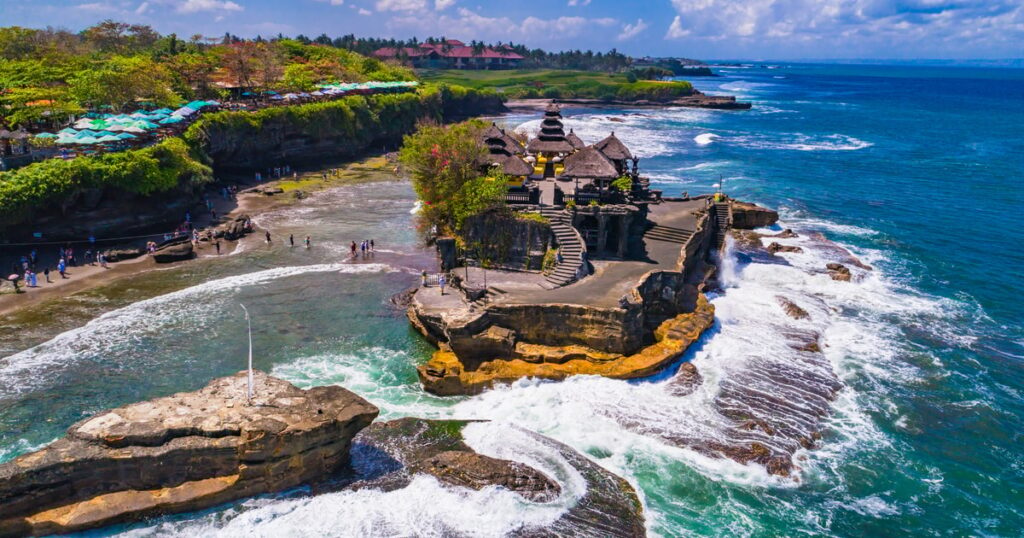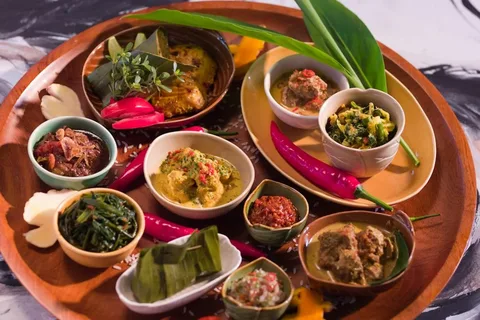Bali, often called the “Island of the Gods,” has captured the hearts of travelers from around the world. With its breathtaking landscapes, vibrant culture, and warm hospitality, it’s no surprise that Bali remains one of the most sought-after destinations in Islands in Southeast Asia.
Having explored Bali extensively, I’ve come to understand its unique customs, hidden gems, and practical travel tips that many first-time visitors might overlook. From navigating visa requirements to avoiding common tourist mistakes, this guide will help you make the most of your Balinese adventure.
With over 6.4 million visitors in 2024, Bali has firmly established itself as a paradise for sun-seekers, adventure lovers, and cultural explorers alike. Whether you’re planning to unwind on its pristine beaches, explore sacred temples, or venture to the nearby Nusa Islands, there’s a lot to consider before packing your bags.
While social media often showcases Bali’s stunning waterfalls, lush rice terraces, and vibrant nightlife, few travelers talk about the practical aspects of visiting. What’s the best way to get around? How do you avoid common travel mishaps? What should you know about Bali’s unique customs and traditions?
During my three-week journey through Bali, I encountered surprises—some delightful, some challenging. From unexpected transportation hurdles to hidden cultural insights, I often found myself thinking, “I wish I knew this before coming!” That’s why I put together this comprehensive guide—to help you navigate Bali like a pro and ensure a seamless, unforgettable experience.
Bali shares its charm with other breathtaking island destinations like Islands in Mexico and Zanzibar, each offering unique landscapes and cultural experiences. But before you embark on your tropical getaway, it’s important to be well-prepared.
Get ready to discover 24 essential things to know before traveling to Bali—everything from budgeting and safety tips to cultural etiquette and must-visit spots. Let’s dive in!
Why Bali Captivates Travelers Around the World
Bali has long been a dream destination, captivating travelers since the tourism boom of the 1980s. Over the decades, the island has faced challenges, from drug-related crimes to the tragic terrorist bombings of the mid-2000s, which claimed 202 lives.
However, Bali’s resilience led to a revival, fueled in part by the Eat, Pray, Love phenomenon in the 2010s, which solidified its reputation as a haven for wellness, spiritual healing, and breathtaking natural beauty.
Beyond its scenic beaches and lush landscapes, Bali has become a global hub for digital nomads, with remote workers flocking to the island even before the pandemic. The blend of modern expat life and deeply rooted traditions makes Bali an extraordinary place to visit.
Bali is part of Indonesia, a predominantly Muslim country, yet it stands out with 83% of its population practicing Hinduism. This unique form of Balinese Hinduism combines traditional Hindu beliefs from India with ancient Balinese customs, shaping the island’s distinctive culture. One of its most famous culinary specialties, Babi Guling (spit-roasted pork), is a stark contrast to the dietary norms in the rest of Indonesia.
Throughout Bali, you’ll encounter Canang Sari, small daily offerings placed at temples, homes, and businesses. These beautifully arranged baskets symbolize gratitude and devotion to the Supreme God, an integral part of Balinese life.

It’s this deep cultural heritage, combined with its modern appeal, that makes Bali truly one-of-a-kind—offering an experience unlike anywhere else in the world.
Related Articles ✈️🏖️🍽️🌴 : What You Need to Know Before Visiting Nusa Penida
24 Essential Things to Know Before Traveling to Bali for an Unforgettable Trip
1. Do You Need a Visa to Visit Bali? Here’s What You Should Know!
If you’re planning a trip to Bali, you’ll need a B213 Visitor Visa to enter Indonesia. However, many travelers can take advantage of the Visa on Arrival (VOA) program, which allows visitors from eligible countries to stay for up to 30 days for tourism purposes.
Skip the Airport Queues – Get Your Visa Online!
Great news! You can now purchase your Visa on Arrival online before arriving in Bali. This means you won’t have to waste time waiting in long lines at Ngurah Rai International Airport (DPS). The VOA costs $35 USD (as of 2023) and can now be extended for an additional 30 days if you wish to stay longer.

👉 Important: Even children need their own Visa on Arrival when traveling to Bali.
Staying Longer or Visiting for Other Purposes?
If you’re planning to stay in Bali for more than 60 days or visiting for reasons other than tourism, you’ll need to apply for the B211A Offshore Visit Visa, which allows an initial 60-day stay and can be extended. You can easily apply for this visa through bali.com.
Final Travel Checklist Before You Fly to Bali
- Passport Validity: Ensure your passport is valid for at least six months from your arrival date.
- Return Ticket: You must have a confirmed return or onward flight before entering Bali.
- Check the Latest Visa Requirements: Immigration rules change frequently, so always verify the latest information on the official Indonesian Visa website before you travel.
By planning ahead, you can enjoy a hassle-free arrival and make the most of your Bali adventure! 🌴✈️
If you’re planning a longer stay, research the appropriate visa options to avoid any issues. Always check the latest travel regulations before your trip to ensure a smooth arrival in paradise.
2. Don’t Underestimate the Rainy Season – It Has Perks!
Many travelers avoid Bali’s rainy season (October to April), but here’s the secret: it can actually be the best time to visit! Showers are often brief, the island is beautifully lush, and prices for flights and hotels drop significantly. Plus, you’ll enjoy top attractions without the usual crowds.
Why You Should Consider Visiting During the Rainy Season
Many travelers assume that Bali’s rainy season (from October to April) should be avoided, but this couldn’t be further from the truth! While there are occasional short, tropical downpours, they often last just a few minutes before the sun re-emerges.

Visiting during this season comes with amazing perks, lower flight prices, discounted accommodation rates, fewer crowds at popular attractions, and an even greener, more vibrant landscape. The island remains warm, with temperatures ranging from 24°C (75°F) to 29°C (85°F), making it perfect for sightseeing, surfing, and exploring.
3. Where to Find Satay in Bali

Bali is home to some of the most stunning resorts and villas in the world, catering to every budget and travel style. Whether you’re looking for a luxurious beachfront retreat, a jungle hideaway, or a family-friendly resort, there’s something for everyone.
Top luxury stays include The Mulia in Nusa Dua, Alila Villas Uluwatu, and Four Seasons Resort Bali at Sayan. For budget-friendly yet stylish stays, check out The Chillhouse in Canggu or Bisma Eight in Ubud. Expedia in advance is highly recommended, especially during peak travel seasons!
4. Top Destinations in Bali
Bali is home to a diverse range of destinations, each offering something unique for travelers. From cultural hubs to luxury retreats and surfer’s paradises, there’s a perfect spot for every kind of visitor.

While some areas are bustling with tourists, others retain a more peaceful and authentic Balinese charm. Here’s a quick guide to some of Bali’s top spots.
Top Destinations in Bali:
- Ubud – Culture, Art, Wellness, Yoga, Nature, Calm
- Sanur – Quiet, Promenade, Family-Friendly, Traditional Vibe
- Nusa Dua / Benoa – Luxury Resorts, Weddings, Family-Friendly, Relaxing Beach
- Canggu / Berawa – Surfing, Digital Nomads, Beach Clubs, Trendy Vibe
- Seminyak – Luxury, Nightlife, Shopping, Upscale Dining
- Kuta / Tuban – Party Scene, Affordable, Surfing, Crowded, Backpackers
- Legian – Beach Vibe, Affordable, Nightlife, Shopping, Families
- Uluwatu / Pecatu – Cliffs, Surfing, Scenic, Remote, Luxury Villas
- 3 Nusa Islands – Diving, Adventure, Motor-Free, Scenic Beauty
- Jimbaran – Seafood, Sunset, Luxury Resorts, Relaxed Vibe
5. Surfers Own Bali’s Beaches
Before setting foot on Bali, I imagined it as a paradise for sunbathers and casual swimmers. But in reality, surfers rule the waves here! The island’s water conditions make it a dream destination for wave riders, drawing enthusiasts from all over the world.

Not into surfing? No problem! You can still enjoy stunning coastal views, relax at beachside bars and cafes, or take a refreshing dip in the ocean. If you’re craving an even more serene beach experience, consider a day trip to Nusa Penida or the Gili Islands for pristine, less crowded shores. And for a unique twist, don’t just stick to beach clubs—explore a jungle club for breathtaking views of lush rice paddies while sipping your cocktail!
6. Get Your Vaccinations in Check “Stay Healthy“
While there are no mandatory vaccinations for entering Bali (unless you’re coming from a country with high-risk diseases like yellow fever), it’s always smart to be up-to-date on essential shots like hepatitis A, typhoid, and tetanus.
Although Bali has a low risk of malaria, rabies remains a concern. If you plan to be around animals or explore remote areas, consider getting a rabies vaccine. For personalized recommendations, consult your doctor before your trip.
7. Bali is Banning Tourists from Renting Motorbikes
If you were hoping to explore Bali on two wheels, you might need a backup plan. Due to a rise in traffic violations and accidents, the local government is moving toward banning motorbike rentals for tourists. While the exact timeline is uncertain, the change will significantly impact transportation options on the island.

If bike rentals are still available when you visit, ensure you have the proper license, wear a helmet, and follow traffic laws. Otherwise, opt for alternative transportation like private drivers, ride-hailing apps, or organized tours to explore the island safely.
8. Bali is Bigger Than You Think
Many travelers picture Bali as a tiny, easy-to-navigate island. Think again! Covering 5,780 km², this tropical haven is far larger than most expect, and getting around isn’t as quick as you might assume.
Bali’s roads are narrow, winding, and often congested. A day trip can easily turn into a 10-hour adventure due to long distances, traffic jams, and unexpected delays. If you’re short on time, plan wisely. Instead of trying to see everything, focus on 1-3 key areas to immerse yourself in. On my last trip, I stuck to the southwest, with a day trip to East Bali. Next time? I’m heading north for waterfalls, temples, and maybe even a dolphin-watching boat tour!
9. Don’t Forget to Pack Bug Spray, or Buy It Locally
Bali isn’t overrun with mosquitoes, but they can still be a nuisance, especially during the rainy season. Instead of packing expensive Western-brand insect repellents, buy local brands like Soffell, which are highly effective and much cheaper. The floral-scented version is a favorite among travelers!
10. Budget-Friendly or Luxury? Bali Has It All
Bali is one of those rare destinations that caters to both budget travelers and luxury seekers. If you’re on a shoestring budget, you can stay in hostels, eat at local warungs, and still have an incredible experience. Mid-range travelers can enjoy affordable yet stunning accommodations, while high-end resorts and jungle clubs offer indulgence without breaking the bank.
11. Filtered Water Bottles: A Game-Changer for Safe Hydration
Bali’s tap water isn’t safe to drink, and relying on single-use plastic water bottles is both costly and environmentally harmful. Bring a reusable bottle with a built-in water filter, like Lifestraw or Larq, to purify your water on the go. This will also come in handy when washing fruits and vegetables or brushing your teeth. Be mindful when consuming ice—only drink from places that use purified water.
12. Get Insider Tips from Locals for Hidden Gems
Bali’s locals are some of the friendliest people you’ll meet, and they love sharing their island’s hidden gems. If you’re staying in a hotel, ask the staff for their favorite secluded beaches, scenic hiking spots, and authentic restaurants that aren’t overrun by tourists. Don’t be surprised if a friendly bartender or shop owner invites you to a traditional Balinese dinner—it’s a fantastic way to experience the culture firsthand!
13. There’s More to Bali Than Canggu
Canggu is popular for good reason—it’s got cool cafes, beach vibes, and a buzzing digital nomad scene. But it’s not the only option! If you’re looking for a more immersive Balinese experience, consider other areas.
Seminyak and Kuta offer lively nightlife, Uluwatu boasts breathtaking cliffside views, and Ubud is perfect for jungle adventures and cultural experiences. If you want to escape the crowds, head to the north for serene landscapes, waterfalls, and authentic local life. And if island-hopping is on your agenda, don’t miss Nusa Penida or the Gili Islands!
14. Avoid Traffic Nightmares : Plan Your Travel Times Wisely
Bali’s traffic can be chaotic, especially in popular areas like Kuta, Seminyak, and Ubud. Avoid peak travel hours between 6 AM – 10 AM and 4 PM – 7 PM to prevent long delays. If you’re heading to the airport, leave early to account for unpredictable road congestion.

15. Support Local Businesses and Authentic Experiences
Bali offers everything from high-end resorts to humble street food stalls, but choosing local businesses over international chains makes your trip more rewarding. Eat at warungs (small family-run restaurants), shop at traditional markets, and stay in locally owned accommodations. This not only gives you an authentic experience but also directly supports the Balinese economy.
16. Cash is King : Always Keep Small Bills Handy
When traveling to Bali, it’s important to remember that cash is often preferred over cards, especially in smaller shops, local markets, and rural areas. While larger establishments like hotels and high-end restaurants typically accept credit cards, many local vendors and street food stalls only accept cash.
Therefore, it’s essential to carry a mix of small bills for everyday purchases like souvenirs, meals, and transport. Keeping small denominations on hand helps avoid inconveniences and ensures you can easily pay for goods and services without the need for change.
Having cash also helps in bargaining situations, as many sellers may offer better prices when you pay in cash. Be sure to withdraw cash from local ATMs or exchange currency at reputable money changers, and keep your bills in good condition to avoid any issues when making payments.
17. Bali’s Iconic Street Food
Satay, a beloved dish in Bali, is known for its tender grilled meat on skewers. Bali is the birthplace of chicken satay, a dish that has now become popular worldwide. Traditionally made with chicken or goat meat, the satay is grilled over an open fire and is usually served with a delicious peanut sauce or a spicy sambal chili sauce.
It’s a staple in Indonesian cuisine and is often enjoyed during gatherings and festivities like Galungan Day.
The dish comes in two variations: “tusuk” (skewered) and “lilit” (twisted). The rich and smoky flavors make satay a must-try in Bali, and it’s so delicious you’ll likely order it more than once during your stay.
Lawar is another iconic dish in Bali, a multifaceted meal traditionally served at festivals or ceremonies. This dish features finely chopped meat such as pork, beef, chicken, or duck, mixed with vegetables, egg, coconut, shrimp paste, and a variety of spices like turmeric, chili powder, and kaffir lime leaves.
Lawar can be served with rice or alongside roasted pork (babi guling), and some versions include pig blood for extra flavor. For those seeking a meat-free alternative, lawar made with jackfruit is also available.
Betutu is a traditional Indonesian dish that will appeal to spice lovers. It consists of duck or chicken that is rubbed with a spice paste made from fresh herbs and spices such as ginger, turmeric, garlic, shallots, and chili peppers. The meat is then wrapped in banana leaves and steamed over hot coals, resulting in a rich and flavorful dish.
Betutu is commonly served with sambal terasi, a hot chili sauce made from shrimp paste, and crispy fried peanuts.
Nasi Goreng, a beloved fried rice dish, is a quintessential part of Indonesian cuisine. Made with rice, sweet soy sauce, shrimp paste, garlic, shallots, and a fried egg, it’s typically served with prawn crackers for a crispy texture.

Nasi Goreng can be enjoyed at any time of the day and is available at street food stalls, local warungs, and fine dining restaurants across Bali.
Sambal Matah, a raw chili paste from Bali, is another essential flavor enhancer in Balinese cuisine. Made from a blend of fresh chilies, shallots, garlic, kaffir lime leaves, and shrimp paste, this vibrant condiment is served with grilled meats or seafood, adding a burst of flavor and heat to any dish.
Nasi Campur, meaning “mixed rice,” is a versatile dish that allows you to choose your favorite side dishes, from chicken and vegetables to tempeh, curries, and stews. It’s a popular choice for group meals, and sambal matah is often added for a spicy kick.
Laklak, a sweet treat made from rice flour, is a favorite snack in Bali. Often enjoyed with coffee or tea, these steamed green and white cakes are flavored with pandan leaves and topped with coconut flakes or sugar.
Bakso, a comforting meatball dish, can be found all over Bali. These meatballs, typically made from beef or chicken, are served in soups or with noodles. For a fiery twist, try bakso mercon, which includes spicy sambal with chili peppers.
Mie Goreng, fried noodles with a mix of savory and sweet flavors, is another favorite dish in Bali. Stir-fried with vegetables, eggs, and meat or seafood, it’s commonly served with shrimp crackers for added crunch.
Pisang Goreng, or fried bananas, is a popular dessert in Bali. Coated in batter and deep-fried, these banana fritters are crispy on the outside and soft and sweet on the inside, making them a delightful treat at any time of day.
Babi Guling, a traditional Balinese dish of roasted suckling pig, is often served during special ceremonies. The pig is rubbed with a spice paste and roasted until tender, with crispy skin. It’s typically paired with rice, vegetables, and sambal.
Ayam Pelalah, a dish of shredded chicken mixed with herbs and spices, is a flavorful staple in Balinese cuisine.
The chicken is grilled, shredded, and stir-fried with a mixture of turmeric, chili, and garlic, creating a savory and aromatic meal.
18. Bali is a Photogenic Paradise
It’s no surprise that Bali dominates Instagram feeds worldwide. The island is packed with picturesque spots—think jungle swings, temple gates, cascading waterfalls, and volcanic landscapes.

You don’t have to chase every famous photo op. Many hotels, cafes, and bars offer equally stunning settings for your travel snapshots. Just ask your host or driver for recommendations and get ready for some jaw-dropping shots that will keep your Bali memories alive forever!
While many hotels and restaurants accept cards, cash is still essential for small vendors, taxis, temples, and street markets. ATMs aren’t always reliable, so withdraw money when you have the chance. Use official bank ATMs (such as BNI, Mandiri, BCA, and CIMB Niaga) to avoid high withdrawal fees. Also, remember that Indonesian ATMs dispense cash before returning your card—don’t forget to take it!
19. The Best Way to Get Around? Rent a Scooter—but Stay Safe!
Renting a moped or scooter is the most efficient and cost-effective way to explore Bali, especially in congested areas like Canggu and Ubud. Apps like Gojek and Grab offer affordable scooter taxis, but always wear a helmet and check reviews before booking a ride. If you’re new to scooters, take a short lesson first—it’s worth it for your safety!
20. Respect the Culture: Dress Modestly in Public Spaces
Bali is a tropical paradise, but that doesn’t mean wearing beachwear everywhere is appropriate. When visiting temples, religious sites, or even local markets, dress modestly by covering your shoulders and knees. Bring a lightweight sarong that you can easily wrap around when needed—many temples also provide sarongs for visitors.
21. Enjoy the Flavors, But Protect Your Stomach
Indonesian cuisine is mouthwatering, but traveler’s stomach issues are real! Even in fancy restaurants, food handling can be unpredictable. To stay safe, pack Imodium and hydration salts, and always have travel insurance in case you need medical care.
Don’t let food worries stop you from enjoying Bali’s amazing flavors! Savor iconic dishes like nasi goreng, mie goreng, and babi guling—but be mindful of where and how you eat. Stick to busy spots with high turnover and drink bottled water to keep your stomach happy.
22. Stay Out of Trouble: Follow Local Laws and Customs
Bali is generally a safe place, but a few simple rules will keep you out of trouble:
- Drugs are strictly illegal – even a tiny amount of cannabis can land you in serious legal trouble.
- Respect religious sites – don’t climb on statues, touch offerings, or enter temples wearing inappropriate clothing.
- Drive safely – foreign travelers are often fined for not wearing helmets or driving without an international license.
Being respectful will ensure a hassle-free experience while making a great impression on the locals.
23. Understanding the ‘No-Sex-Before-Marriage’ Law
Indonesia introduced a controversial law in 2022 prohibiting premarital sex, but it’s unlikely to impact tourists. The law can only be enforced if a report is filed by a spouse or immediate family member. The Balinese tourism industry has assured visitors that this rule will not be used to target foreign travelers, so there’s no need to worry.
24. Be Ready to Pay the New Bali Tourist Tax
From February 2024, all foreign visitors must pay a 150,000 IDR (~$9.40 USD / €8.90 EUR / AU$14.75) tourist fee upon arrival. The funds help preserve Bali’s natural beauty and tackle environmental challenges, such as waste management and overtourism. Keep this in mind when budgeting for your trip!
Conclusion
Bali is an extraordinary destination that combines a rich cultural heritage, natural beauty, and modern conveniences to create the ultimate tropical getaway. Whether you’re exploring Bali’s lush jungles, enjoying the surf, indulging in its street food, or unwinding at luxurious resorts, there’s no shortage of memorable experiences waiting for you.
However, a successful trip to Bali requires careful planning and awareness of local customs, rules, and practicalities. From understanding visa requirements to navigating the island’s traffic, being prepared will ensure a smoother, more enjoyable vacation. Bali’s allure lies in its diversity—from its peaceful temples and serene rice terraces to the lively beaches and bustling markets. By following these 24 essential tips, you’ll be ready to embrace everything this paradise island has to offer.
As you plan your trip, remember that Bali is just one of many amazing destinations waiting to be explored. If you’re looking for another romantic paradise, don’t miss out on discovering the Best Caribbean Islands for Couples: Discover Your Romantic Paradise. And if you’re someone who loves to explore different corners of the globe, check out 10 Things You Need to Know if You Love to Travel the World for more expert tips and recommendations. For those looking to experience even more exotic islands, the 8 Most Beautiful Islands in Mexico You Must Visit should be on your radar for your next adventure.
So, pack your bags, immerse yourself in Bali’s unique atmosphere, and create unforgettable memories on this enchanting island.
Frequently Asked Questions (FAQ) About Traveling to Bali
Is $100 a day enough for Bali?
Yes, $100 a day is generally enough for a comfortable trip to Bali, depending on your travel style. Budget travelers can get by on much less, with affordable accommodations, local food, and cheap transportation options. However, if you prefer luxury hotels, fine dining, and private tours, you might need a higher budget.
What are the do’s and don’ts in Bali?
Do’s:
- Respect local customs and dress modestly when visiting temples.
- Use both hands when giving or receiving something as a sign of respect.
- Negotiate prices politely at markets, as bargaining is common.
- Carry small bills, as many local vendors may not have change.
- Support local businesses by choosing family-owned restaurants and shops.
Don’ts:
- Don’t touch someone’s head, as it is considered sacred in Balinese culture.
- Don’t point with your index finger; instead, use your whole hand.
- Don’t step on offerings (canang sari) placed on sidewalks.
- Don’t drink tap water; always opt for bottled or filtered water.
- Don’t display excessive public affection, as it is frowned upon in certain areas.
What do I need to get before going to Bali?
Before traveling to Bali, ensure you have the following:
- A valid passport with at least six months of validity.
- A visa if required (check the latest visa policies).
- Travel insurance covering medical emergencies and trip cancellations.
- Vaccinations (consult your doctor for recommended shots).
- International driver’s license if planning to rent a scooter.
- Lightweight clothing and modest attire for temple visits.
- Mosquito repellent and sunscreen for protection.
How to avoid Bali belly?
Bali belly (traveler’s diarrhea) is common but can be avoided with these precautions:
- Drink only bottled or filtered water. Avoid ice cubes unless from a trusted source.
- Eat at reputable restaurants and avoid street food with poor hygiene.
- Wash your hands frequently or use hand sanitizer before meals.
- Avoid raw or undercooked seafood and meat.
- Consider taking probiotics before and during your trip to strengthen your gut health.


1 thought on “24 things to know before going to Bali”